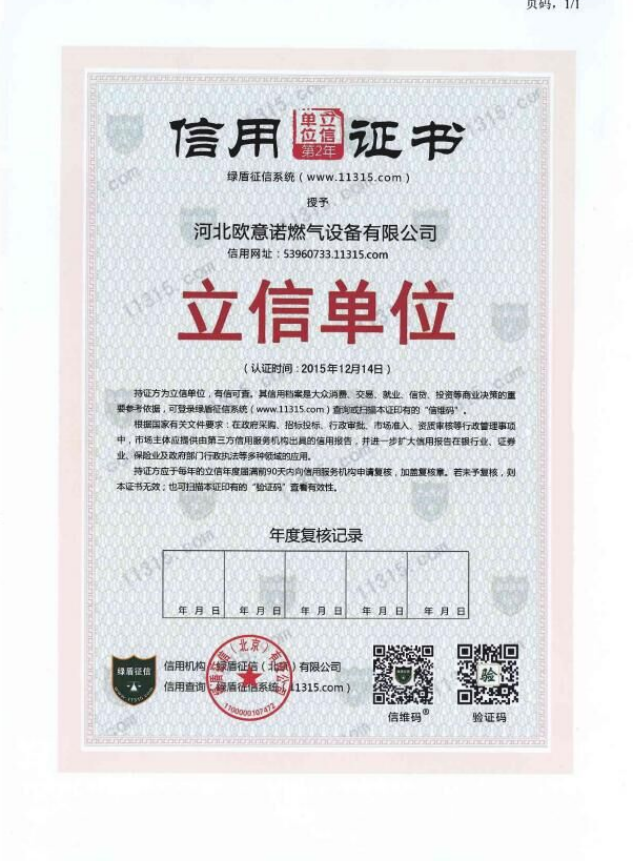
Dec . 04, 2024 16:32
Back to list
high pressure regulators
Understanding High Pressure Regulators
High pressure regulators are essential components in a variety of industries, including gas distribution, welding, and industrial manufacturing. These devices are employed to manage and reduce high pressures of gas or liquid to a lower, more manageable level for safe and efficient use in various applications. Understanding how high pressure regulators function and their importance can help ensure optimal performance and safety in numerous systems.
What is a High Pressure Regulator?
A high pressure regulator is designed to control the pressure of gases or liquids coming from a source, such as a gas cylinder or a high-pressure line. The primary function of the regulator is to reduce the pressure of the incoming fluid to a preset level, which can be adjusted based on the requirements of the specific application. For instance, in gas distribution systems, a regulator controls the pressure of propane or natural gas before it enters homes or businesses.
Key Components of High Pressure Regulators
High pressure regulators typically consist of several key components
1. Inlet and Outlet Ports These ports connect the regulator to the high-pressure supply and the downstream system, respectively. 2. Diaphragm The diaphragm is a flexible membrane that responds to pressure changes. It moves in response to the pressure from the inlet, allowing the regulator to adjust accordingly.
3. Adjustment Screw This component allows users to set the desired outlet pressure. By turning the screw, the tension on the diaphragm changes, which in turn adjusts the regulated output pressure.
4. Safety Relief Valve This feature is crucial for preventing over-pressurization. If the regulated pressure exceeds safe levels, the safety relief valve opens to release excess pressure, protecting downstream equipment and systems.
Applications of High Pressure Regulators
high pressure regulators

High pressure regulators are utilized in various applications where control over gas or liquid pressure is vital. Some of these applications include
- Gas Distribution In residential and commercial environments, regulators manage the pressure of natural gas or propane, ensuring safe delivery to appliances.
- Welding and Cutting Operations In welding and metal cutting, high-pressure gas cylinders are used. Regulators help maintain a steady flame by controlling the gas supply pressure.
- Industrial Processes Many manufacturing processes rely on precise gas pressures for chemical reactions, material handling, and other production needs.
- Medical Applications In healthcare, high pressure regulators are used to control the flow of gases like oxygen or nitrous oxide, ensuring patients receive the correct dosage at safe pressures.
Importance of Proper Maintenance
To ensure that high pressure regulators function efficiently and safely, regular maintenance is crucial. Operators should routinely inspect the regulators for signs of wear, leaks, or damage. It is also essential to check the pressure setting against the requirements of the application to avoid accidents caused by over or under-pressure.
Conclusion
High pressure regulators are vital devices that play a critical role in enhancing safety and efficiency in various applications involving gases and liquids. By understanding their functions, components, and applications, users can better appreciate the significance of these devices in everyday operations. Whether in industrial settings, medical facilities, or household applications, proper management of pressure through high pressure regulators is paramount. Through diligent maintenance and monitoring, users can maximize the longevity and reliability of these important tools, ensuring they continue to operate safely and effectively.
Next:
Latest news
-
Safety Valve Spring-Loaded Design Overpressure ProtectionNewsJul.25,2025
-
Precision Voltage Regulator AC5 Accuracy Grade PerformanceNewsJul.25,2025
-
Natural Gas Pressure Regulating Skid Industrial Pipeline ApplicationsNewsJul.25,2025
-
Natural Gas Filter Stainless Steel Mesh Element DesignNewsJul.25,2025
-
Gas Pressure Regulator Valve Direct-Acting Spring-Loaded DesignNewsJul.25,2025
-
Decompression Equipment Multi-Stage Heat Exchange System DesignNewsJul.25,2025

